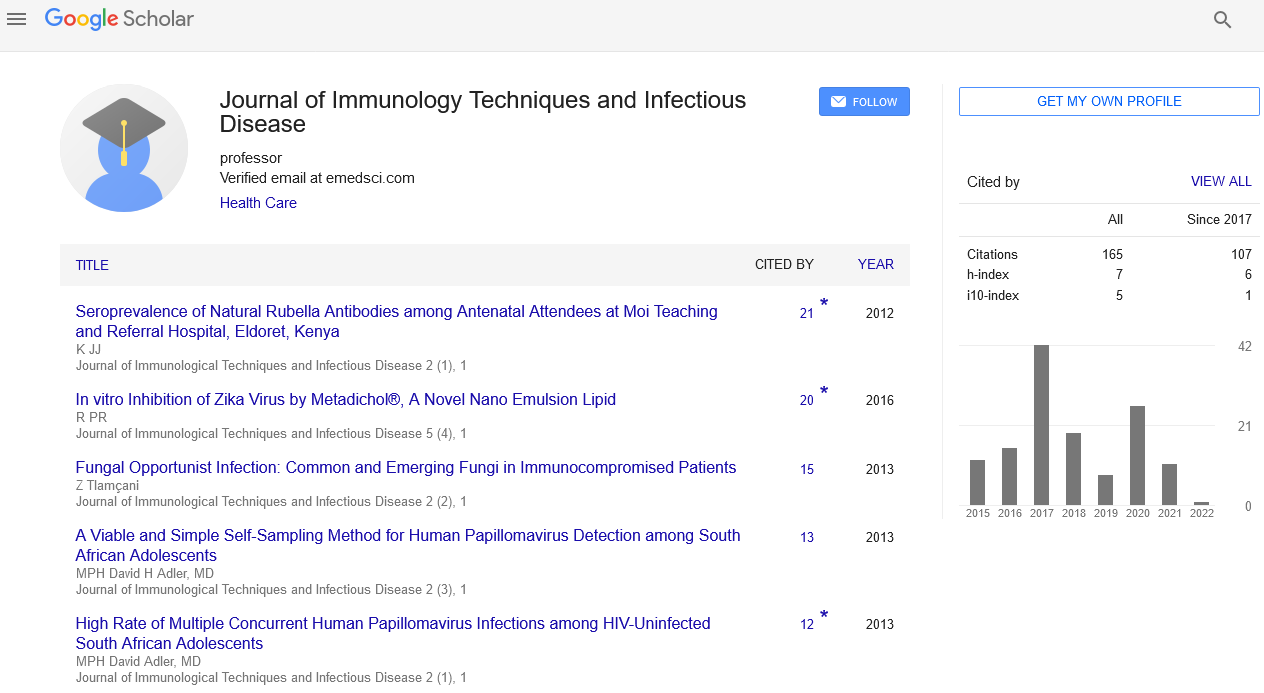Integrated hepatitis B virus DNA is a source of HBsAg
Christine I Wooddell
Arrowhead Pharmaceuticals, USA
: J Immunol Tech Infect Dis
Abstract
Statement of the Problem: Worldwide, 250-400 million people are chronically infected with hepatitis B virus (HBV), leading to 800,000 deaths per year from liver cirrhosis, liver failure and hepatocellular carcinoma. Highly expressed viral proteins, thought to be transcribed from viral covalently closed circular DNA (cccDNA), play a role in chronicity. Nucleos (t) ide viral replication inhibitors (NUCs) do not reduce viral proteins. RNA interference (RNAi) therapeutic ARC-520 was developed to reduce all viral proteins and pre-genomic RNA. In human clinical trials, Heparc-2001 with ARC-520, HBV S antigen (HBsAg) was strongly reduced in treatment where naïve patients were positive for HBV e antigen (HBeAg) but was significantly less reduced in patients that were HBeAg negative or had received long-term therapy with NUCs. Methodology & Theoretical Orientation: The molecular basis for this unexpected differential response was investigated by multiple approaches in chimpanzees chronically infected with HBV and treated with monthly dosing of ARC-520 in the presence of NUCs. Liver HBV mRNA was quantified and sequenced using RT-qPCR, mRNA-seq and Iso-seq. Liver HBV DNA was also quantified and sequenced. Findings: HBsAg was expressed not only in the episomal cccDNA mini chromosome, but also in transcription of HBV DNA integrated into the host genome, which was a significant source in HBeAg negative chimpanzees. Many of these integrantderived transcripts lacked target sites for the siRNAs in ARC-520, explaining the reduced response in HBeAg negative chimpanzees and by extension in HBeAg negative patients. Treatment of the HBeAg negative chimpanzees with siRNA hypothesized to target mRNA produced by integrated HBV resulted in deep HBsAg reductions similar to those in the HBeAg positive chimpanzees. Conclusion & Significance: These results uncover an under-recognized source of HBsAg that may play a key role in maintaining chronicity, a finding expected to alter clinical trial design and endpoint expectations for new HBV therapies. Treatment of chronically HBV-infected chimpanzees with ARC-520.
Biography
Christine I Wooddell received her Graduate training in Cell and Molecular Biology with an emphasis on transcription and gene regulation. She then worked on development of gene therapy at Mirus Bio, first on the development of therapeutic gene expression vectors and then on delivery of gene therapy for Duchenne muscular dystrophy. Mirus Bio was acquired by Hoffmann-La Roche and then by Arrowhead Pharmaceuticals. She is now the Director of Liver Targeting at Arrowhead where she leads the preclinical research group to develop liver-targeted therapeutics using animal models. Since 2011 her research has focused on the development of RNA interference therapeutics to treat chronic hepatitis B virus infection and liver disease associated with alpha-1 antitrypsin deficiency (AATD). ARC-520 and ARC-521 were developed to treat HBV infection and ARC-AAT to treat AATD liver disease. These three drugs have been advanced to Phase 2 clinical trials.
 Spanish
Spanish  Chinese
Chinese  Russian
Russian  German
German  French
French  Japanese
Japanese  Portuguese
Portuguese  Hindi
Hindi 
